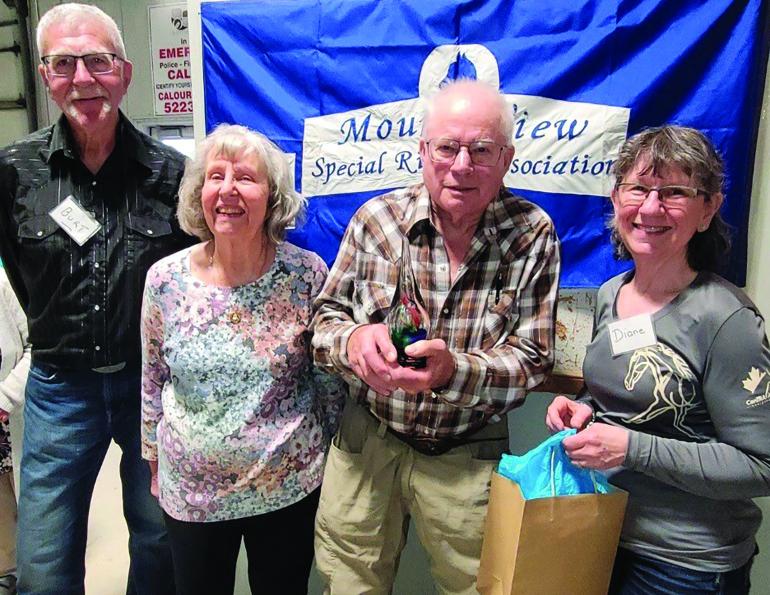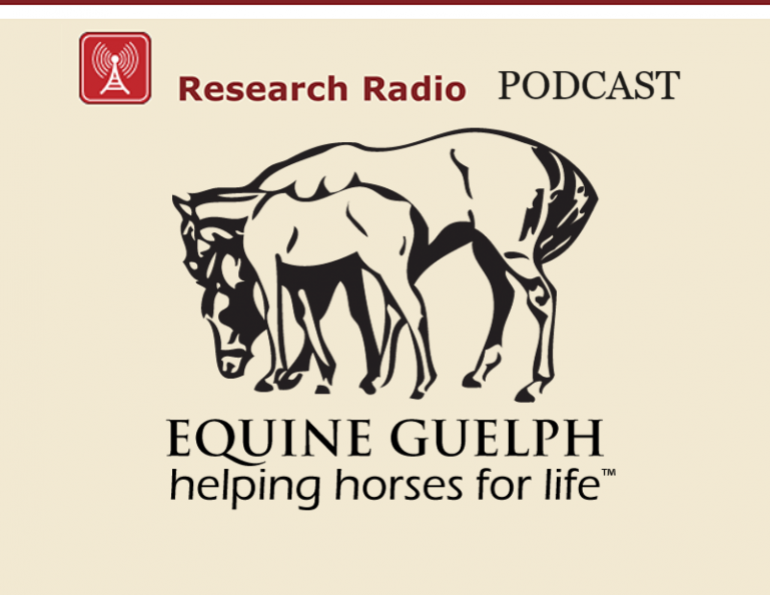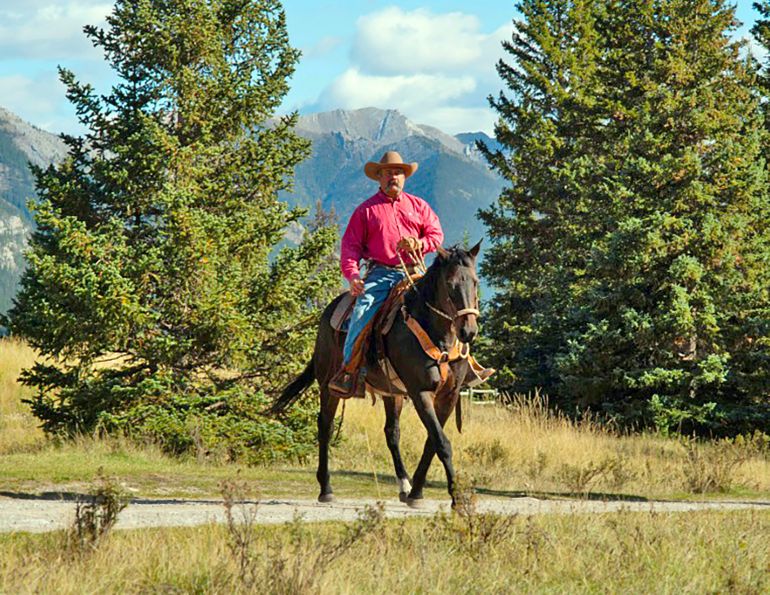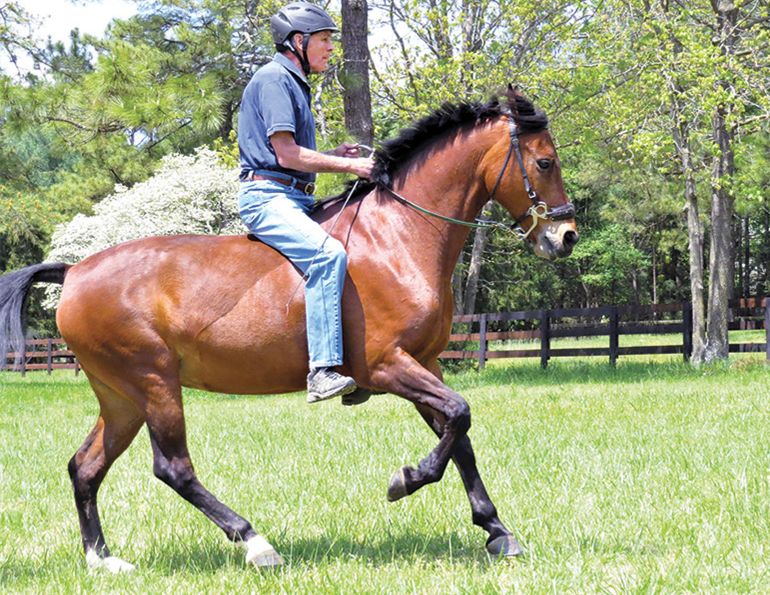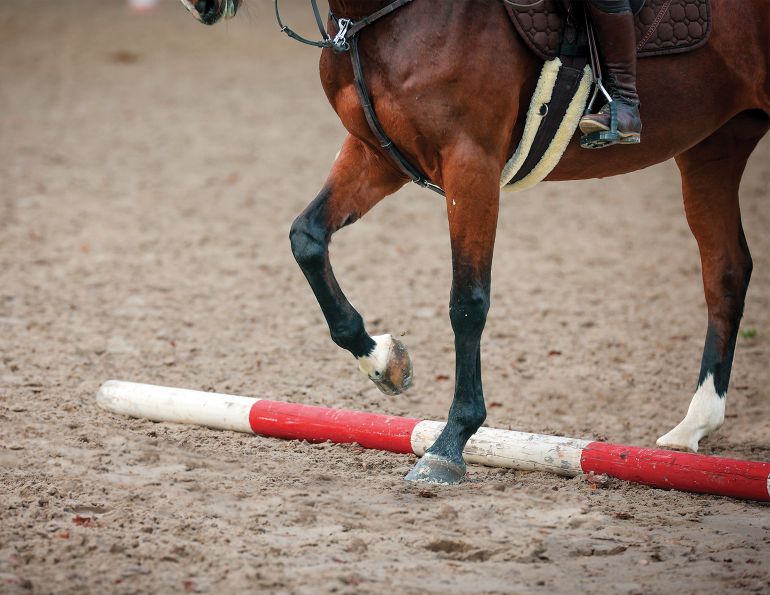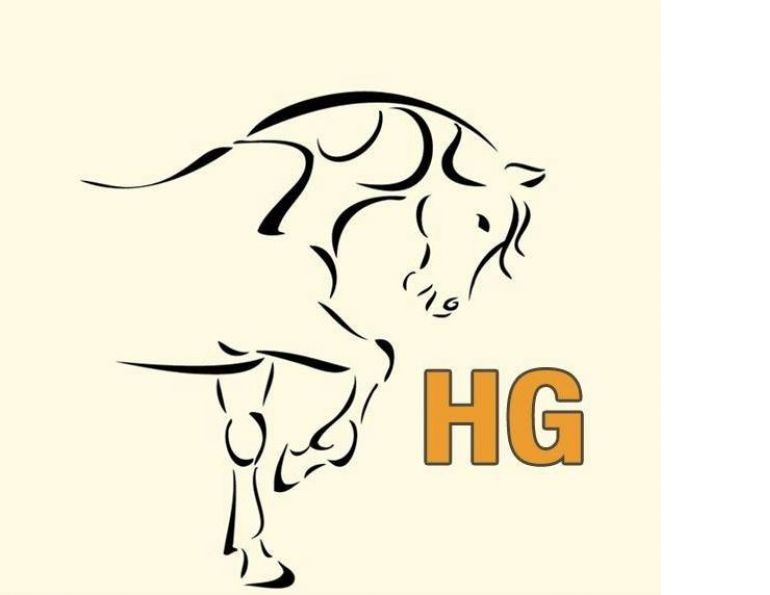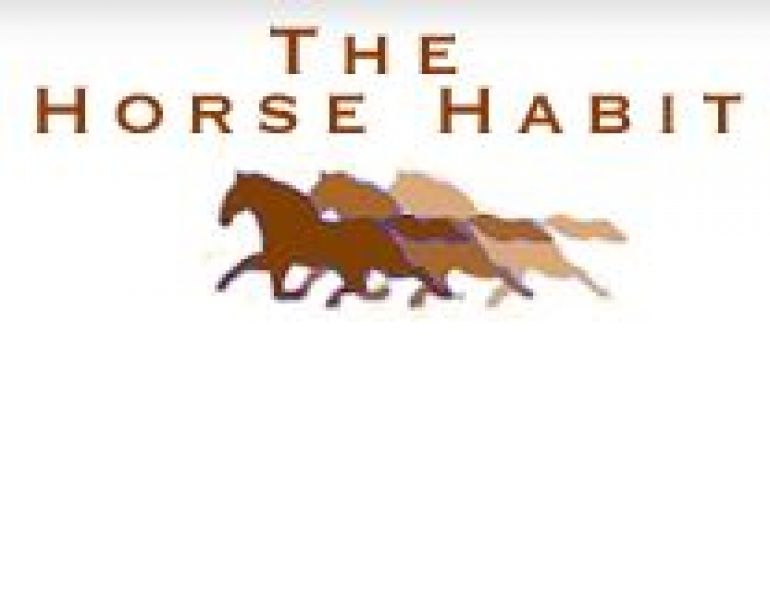By Jonathan Field
In this series we’ve observed how my program has broadened the foundation of Halo, who had a seemingly unpredictable tendency to buck, and has developed his trust in me. After groundwork sessions, we saddled Halo and took him through his first ride with me, followed by several rides in the arena and around my ranch in Abbotsford, BC. We then loaded Halo into the trailer and took him to our James Creek Ranch in Merritt, BC, where we expanded his foundation even further. Halo will ultimately be an eventing horse, doing dressage, show jumping, and cross-country, so it’s especially important to expose him to as many environments as possible. This kind of foundation and exposure, however, is what I would do with any horse, regardless of discipline or use.
The Restarting Process
When people focus on what they want with their horse, all too often they concentrate only on one specific discipline. For instance, if they’re going to jump, their arena is chockfull of cavalettis and jumps and that becomes the horse’s entire universe. By expanding the horse’s world, his confidence increases. I can then trust the horse in most circumstances, at any moment, under any amount of pressure. This is a gradual process; I don’t rush it nor do I expect great results right away. What I do with a horse before I expect anything of him is so much more than you might think! The more we can successfully involve the horse in a variety of experiences, the better off the horse is and the better off we are.
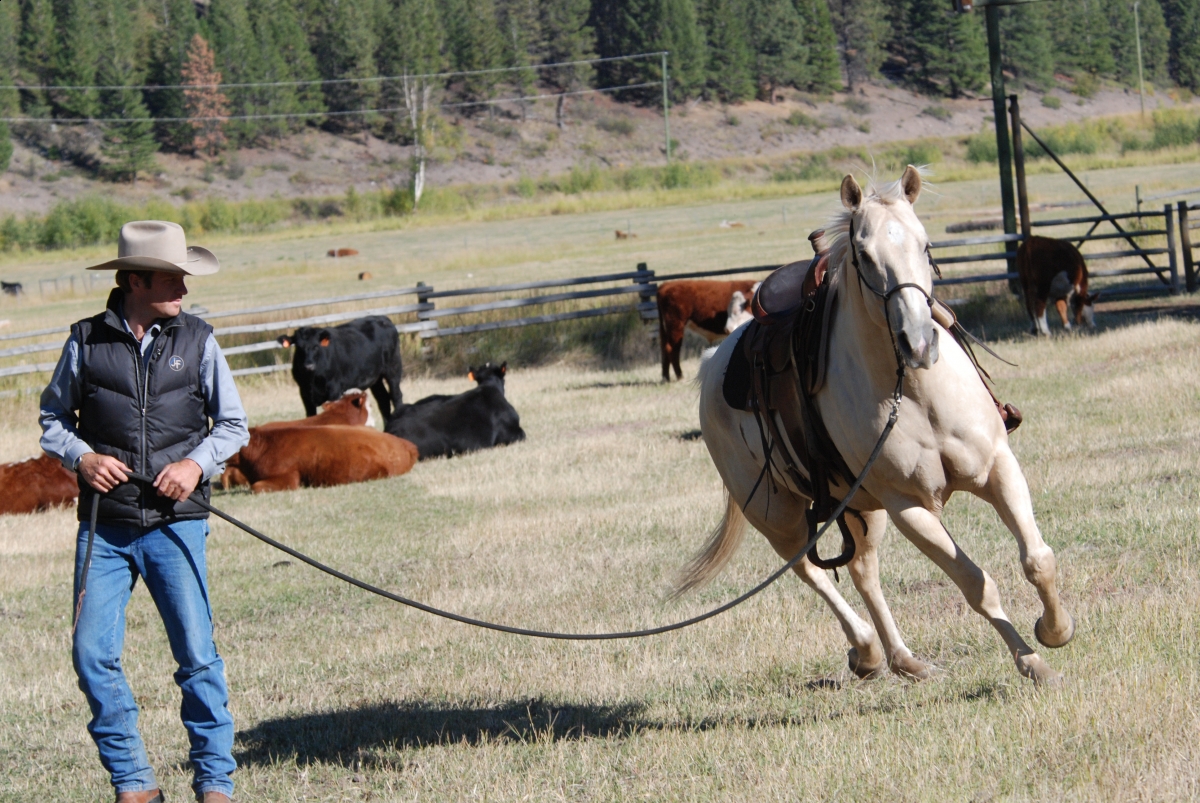
The Importance of Basics
Before saddling Halo, I led him around to warm him up and accustom him to the environment.
Then I saddled him and continued to lead him from the ground, getting him relaxed, moving forward, and confident. My intention was to keep his mind as far away from bucking as possible.
I didn’t ask a lot of him, but simply kept him moving around the area where we were going to ride.
I think of this kind of session as having a “bubble” around it about the size of a small arena. I get the horse calm and confident in that in-the-moment bubble, then meander to another bubble.
After a warm-up on the lead line (the cows were not impressed), I did a half-mount with a lateral bend, practiced from both sides. Halo passed the test with flying colours. Had he not passed, I would have repeated the lessons demonstrated in this series until I felt he was safe to get on.
Hello, Cows!
Because Halo didn’t display any tension in his mind or body at this point, I safely mounted and rode him at a walk until we were in synch with each other.
Then it was time for Halo to meet the cows.
He’d seen cows in Abbotsford, but not while being ridden — and on that previous day he was quite reactive in the presence of these alien beings.
Halo’s ears were certainly in full salute toward the cows this particular morning, but because he had a confidence building session earlier, along with our increasing trust of each other, Halo didn’t buck, bolt, or spin.
He was pretty alert, I must admit, but he was confident in his approach.
It was time to urge him onward with something new.
After a few minutes of observation, I asked Halo to approach the cows.
I could feel a bit of hesitation at first, but then I sensed that he felt, “Hey, I’m getting pretty good at this and I’m actually pushing these cows!”
There’s a certain confidence I can feel from a horse who shifts his thinking from “Get me outta here!” to “This is pretty cool — I think I like this!”
About the time Halo thought it was fun, I took him away from the cows.
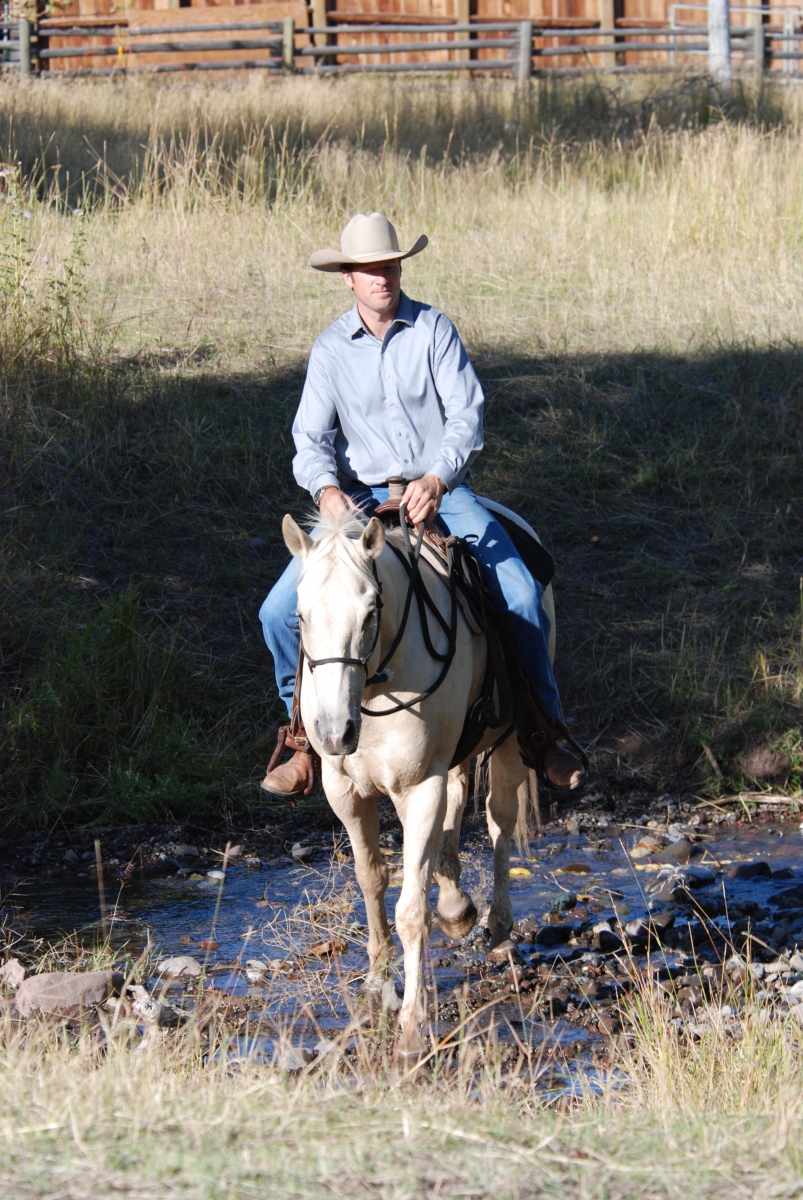
After the Cows, Now What?
We left the “cow obstacle” and I rode Halo around the ranch at a sauntering pace. James Creek was nearby, so it was time for Halo to get his feet wet. He actually went across the creek without any incident — no refusal, leaping, spinning, or jumping — which we’ve all seen horses perform at creek crossings. This creek has a solid bottom that is visible to horses, which helps them be confident with water crossings.
You might remember from the first article ("Restarting Halo") that Halo successfully went into a boggy pond, which is certainly more challenging, so it’s no surprise that he did so well with the creek.
As an eventing horse, Halo will encounter all types of water crossings and water jumps, so we practiced the creek crossing several times until it became routine. I let him graze while standing in the water, and Halo even trotted through the creek without a care.
Jump, Halo, Jump!
In the first photo, I’ve asked Halo to simply relax in front of the log.
With any obstacle — whether it’s a log, creek, tarp, or any kind of challenge — in the beginning stages I approach gradually and stop the horse about 20 feet before the obstacle.
Then I ask the horse to slowly negotiate the obstacle, followed by stopping him on the other side and getting him to relax.
I address each obstacle as an individual moment in time: the horse sees the obstacle, faces it, goes through it, stops on the other side, and then relaxes and “soaks” on his accomplishment.
By always stopping and relaxing at the far side, the horse thinks there is a “neutral sweet spot” on the far side of any obstacle where he can rest.
I always “park” the horse at the same sweet spot — sometimes facing the obstacle, sometimes facing away from it.
I repeated the log obstacle several times until Halo was completely comfortable going over it at the walk before I added any speed. There are no additional segments to these lessons: Halo looks at the obstacle, goes over it, stops, and rests.
The only time I start adding additional elements to the polished basics is when those elements are very simple and can be addressed individually. I wouldn’t add anything where Halo needs to rush or clamour, which could possibly lead to bolting.
Keeping it simple leads to success.
When to Ask for More
There is a concept I call “active neutral,” which means the horse doesn’t have any pent-up energy and I can ask him to move with relaxation.
By the time Halo warmed up he didn’t have a lot of extra energy, but he still wasn’t completely at ease in the 50 acre pasture, so I rode him until he was at neutral and at ease in his mind.
In the photo where Halo is trotting, you’ll notice that he’s relaxed, stretched out, and “coming through” very nicely. That was the moment I asked him to canter.
I cantered Halo on and off for five to ten minutes, letting him develop a rhythm and work up a little sweat. Early on I wanted him to experience the cows, creek, and log, which became the challenges of the day.
From there, I wanted him to go into the canter until he really relaxed.
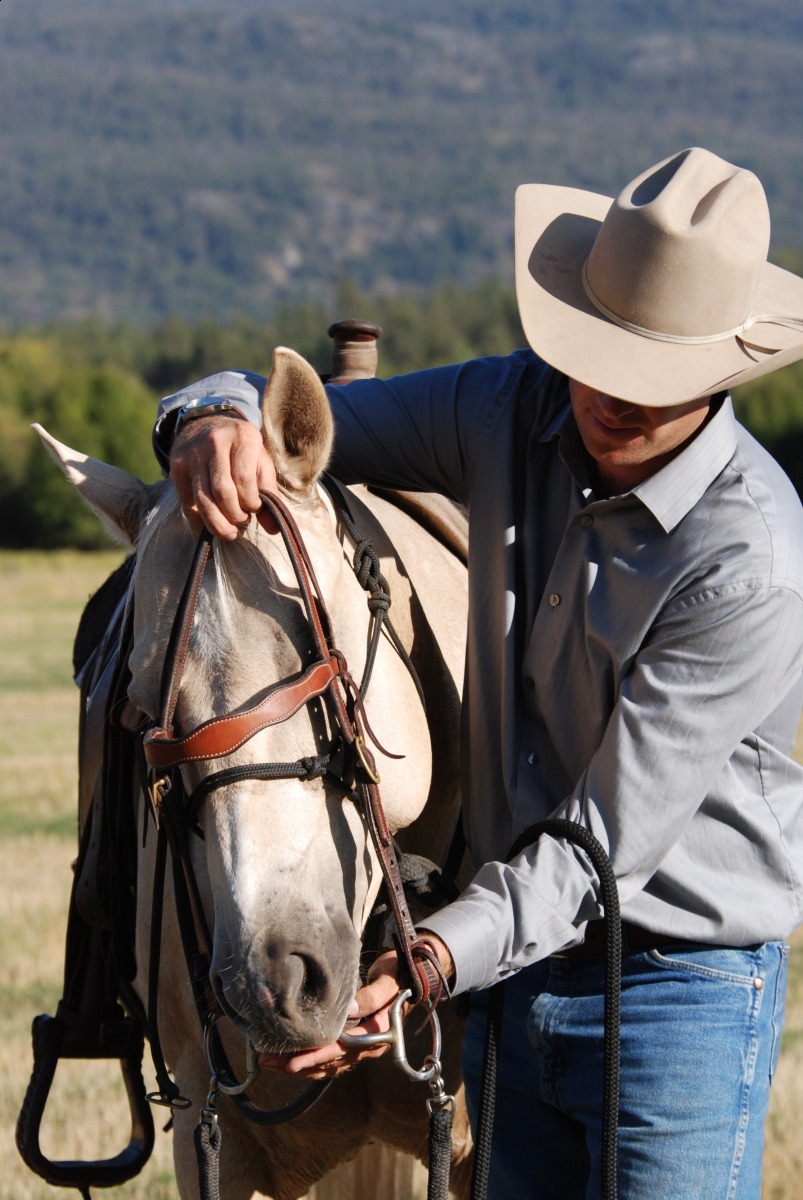
Carrying the Bit
As I’m reviewing the session in my mind and about to wrap it up, I chose to transition Halo into the bridle.
Halo has shown very little resistance with the hackamore, so he’s ready for this next level.
During the cool-down phase of this session, I asked Halo to just “pack” the snaffle bit in his mouth. I put the bridle (no reins) over the hackamore and placed the snaffle in Halo’s mouth, asking him to simply carry it without instruction from any reins.
At first he mouthed the bit, demonstrating that he was uncertain about this piece of steel. Again, I waited until he came to neutral, was at ease with this new experience, and accepted the placement of the snaffle in his mouth before I rode him.
As soon as he relaxed and became accustomed to the feel of the snaffle, I hooked on another set of reins and rode him with a two-rein setup. The rein from the hackamore is placed over my left arm; I could show Halo some basic steering this way.
This helps direct the horse and gives him an initial feel of the bit, how it moves in his mouth, and what his responses should be. Should the horse react and get worried, I could pick up the hackamore reins and direct him in accordance with what he’s accustomed to and already knows.
This transition to the bit will continue over the next few weeks, keeping the hackamore in place before riding with just the snaffle. Halo will learn to accept the bit and replace all the skills he learned in the hackamore with the same skills guided by the bit.
The reason I rode Halo in the hackamore to begin with and did not go directly to the snaffle bit was because my online groundwork program is so in-depth — all performed with a halter. The groundwork involves a number of elements, including disengagement, bend, crossing the back legs over, control, safety, personal space, etc. With these core elements, the horse learns to connect the requests from the halter directly to the placement of his feet. The hackamore simulates the halter in exactly the same way. The horse goes from an understanding of the halter on the ground to an understanding of the hackamore under saddle. If there is any resistance from the horse, there is less chance of a fight because of his understanding of the hackamore rather than the bit.
Another benefit of the hackamore during this initial phase is that if I need to pick up on the horse, I’m not pulling on his mouth. Having the bit come up hard on his mouth would add pain to the lesson, which may spark a buck or bolt.
The best time to introduce something new like the snaffle bit and habituate Halo to it is when we’re winding down from a big session; he’s relaxed and has a bit of a sweat from good exercise. During the last 15 minutes of the lesson as he cools down, I’ll walk him while he’s packing the snaffle. He’ll soon associate the bridle with “It’s the end of my session!” I finished Halo’s lesson with a neutral lateral bend, just like how we started the day.
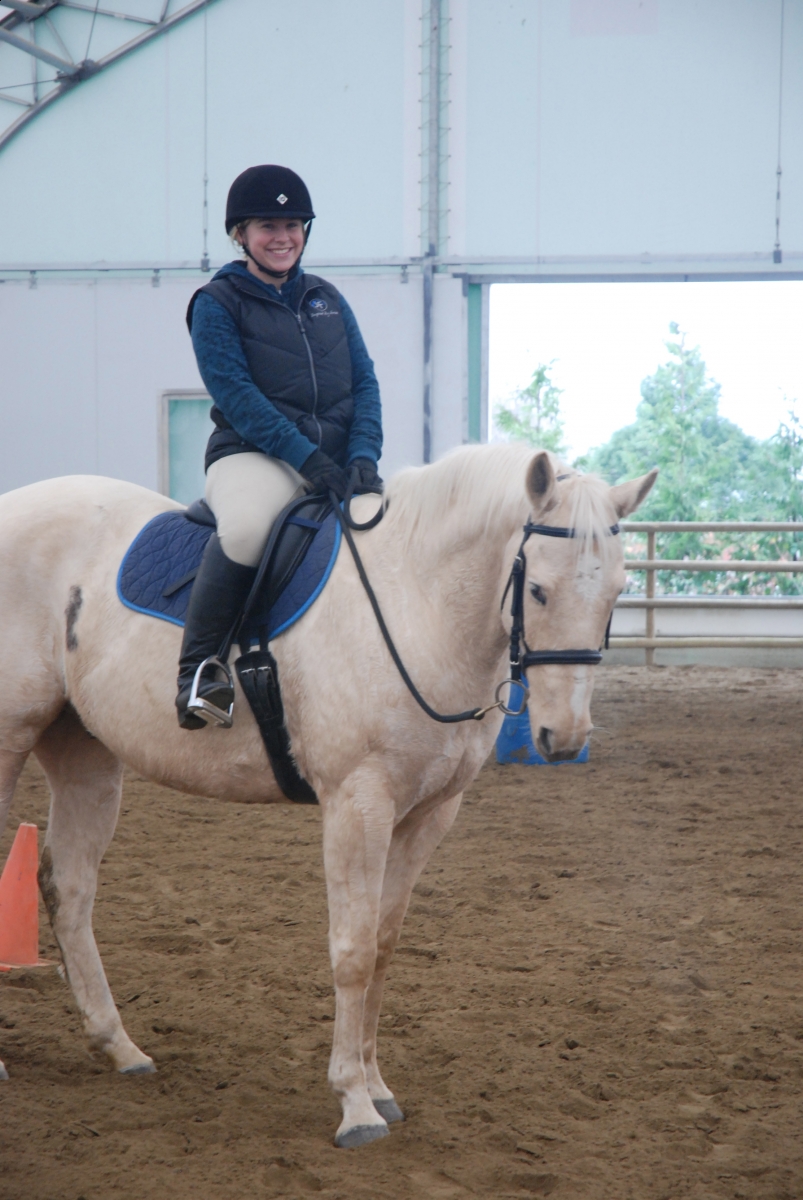
Success! Halo with his owner, Rylee. It takes many steps and a slow pace to restart a horse like Halo and build his confidence. Photo: Angie Field
Next Rider!
After getting Halo solid to this point, I turned him over to my apprentice, Liz Duncan, so Halo got a sense of being ridden and handled by someone else. Halo certainly did his best to test Liz, but soon realized that she had skillful knowledge of the program to get him to cooperate.
It was important that Halo experience another qualified rider before being returned to his owner, Rylee, so she can safely continue with her horse’s education and success.
Track the progress of Halo in the previous parts of this series, "Restarting Halo" and "Restarting Halo, Part 2".
All photos by Angie Field.



